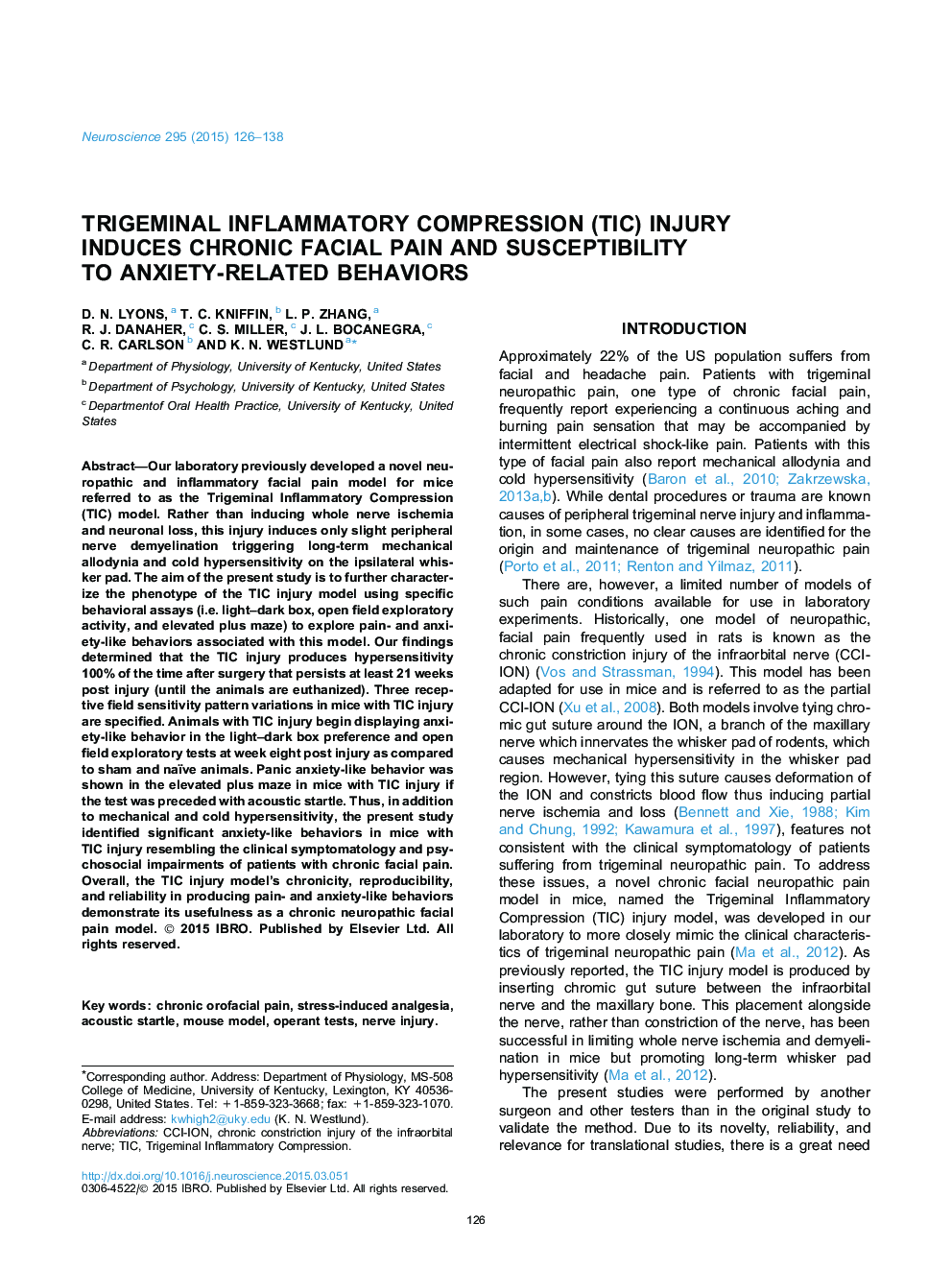| Article ID | Journal | Published Year | Pages | File Type |
|---|---|---|---|---|
| 6272490 | Neuroscience | 2015 | 13 Pages |
â¢TIC injury in mice induces mechanical allodynia and cold hypersensitivity.â¢TIC injury induces anxiety- and depressive-like behaviors in mice 8 weeks after injury.â¢When exposed to an acoustic startle stimulation, mice with TIC injury express stress-induced analgesic behaviors.
Our laboratory previously developed a novel neuropathic and inflammatory facial pain model for mice referred to as the Trigeminal Inflammatory Compression (TIC) model. Rather than inducing whole nerve ischemia and neuronal loss, this injury induces only slight peripheral nerve demyelination triggering long-term mechanical allodynia and cold hypersensitivity on the ipsilateral whisker pad. The aim of the present study is to further characterize the phenotype of the TIC injury model using specific behavioral assays (i.e. light-dark box, open field exploratory activity, and elevated plus maze) to explore pain- and anxiety-like behaviors associated with this model. Our findings determined that the TIC injury produces hypersensitivity 100% of the time after surgery that persists at least 21Â weeks post injury (until the animals are euthanized). Three receptive field sensitivity pattern variations in mice with TIC injury are specified. Animals with TIC injury begin displaying anxiety-like behavior in the light-dark box preference and open field exploratory tests at week eight post injury as compared to sham and naïve animals. Panic anxiety-like behavior was shown in the elevated plus maze in mice with TIC injury if the test was preceded with acoustic startle. Thus, in addition to mechanical and cold hypersensitivity, the present study identified significant anxiety-like behaviors in mice with TIC injury resembling the clinical symptomatology and psychosocial impairments of patients with chronic facial pain. Overall, the TIC injury model's chronicity, reproducibility, and reliability in producing pain- and anxiety-like behaviors demonstrate its usefulness as a chronic neuropathic facial pain model.
